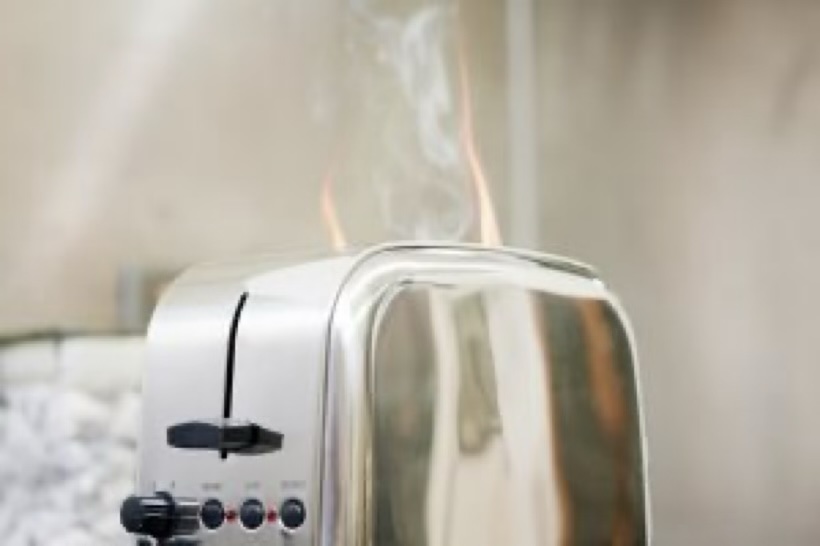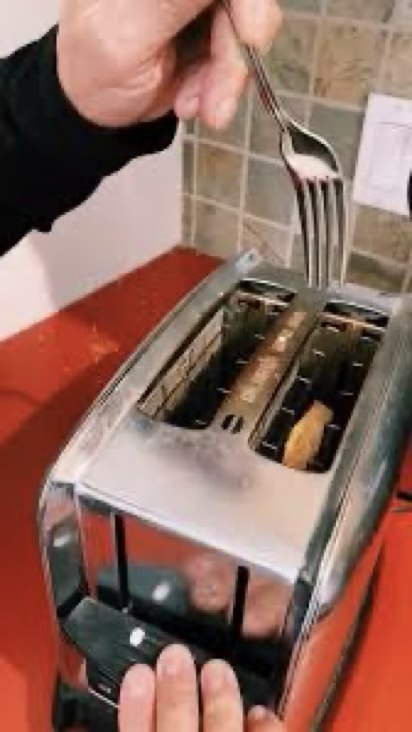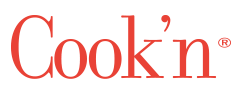Thoughts on Staying Safe in the Kitchen
Life can turn on a dime! My cousin, Vera, recently had a kitchen fire that caused some serious damage. And it was all because of her toaster. She learned the hard way to unplug it when she’s not using it.
I wondered, “Is this a common problem, and is there anyone that really does that?” Well, turns out, there oughtta be, because the toaster is one of the biggest fire hazards in the kitchen. All sorts of research says it’s true (National Association of Public Insurance Adjusters, etc).

And data also shows that’s not the only thing that should be unplugged when not in use. For instance:
- toaster ovens
- air fryers
- crock pots
- waffle irons
- panini presses
- countertop skillets
Besides protecting against fires, unplugging countertop appliances also reduces energy consumption and helps protect them from damage caused by power surges. I honestly had no idea, but OK, I’ll learn from Vera’s experience and err on the side of caution.
With that idea in mind, here are a few more kitchen safety tips we might want to consider:

- Speaking of toasters, you already know not to use a fork or knife to dig around in there, right? At least not while it’s plugged in. A wooden chopstick is a better choice.
- And it’d be smart to follow the example of professional kitchens and be prepared with a filled and inspected fire extinguisher for that unexpected fire (Vera didn’t have one; she does now).
- And another safety practice that’s probably taught in culinary school (Brennah can weigh in on this): to protect yourself from being burned by boiling liquids, always stir away from your body to avoid splattering onto your skin. Also, keep the handle of your pot or pan over the countertop on your dominant side. This placement makes it easy to grab and maintain control while cooking, and also prevents anyone from bumping into the pan and spilling hot liquids all over themselves and the floor.
- Then there’s the tip our Moms taught us: “Clean up spills and messes as you work because a tidy kitchen is a safe kitch

- Of course, there’s always knife cautions to take: When cutting, chopping, dicing, or slicing, cut slowly while keeping the tip of your knife down on the cutting board. This is the easiest way to avoid accidentally stabbing yourself or slicing a finger. And then there’s more Mom advice: “Don’t run with a knife or scissors in your hand. And if you do, don’t come running to me for sympathy if you poke your eye out!”
- And don’t forget the old “Wash your hands!” This is crucial advice. Cross-contamination can happen quickly. And they should be washed OFTEN. Proper kitchen etiquette is to wash between preparing different food items. I know you’re all aware we never use the same cutting board for raw meat and other foods, but did you know that food handler gloves should be tossed out after working with raw meat and before you work with other foods? I teach cooking classes and this was one of the first things I learned to do.
- Finally, here’s my own tip: If there are a few folks working together in the kitchen, it’s always good practice to say things like “Hot coming in” or “Hot behind you.” And saying “Thank you” to the one carrying the “hot” never gets old.
I’ll close with one last thought on staying safe, not just in the kitchen, but in this dangerous world: The more we weigh, the harder we are to kidnap. So eat cake and stay safe!
 Alice Osborne
Alice Osborne
Weekly Newsletter Contributor since 2006
Email the author! alice@dvo.com
